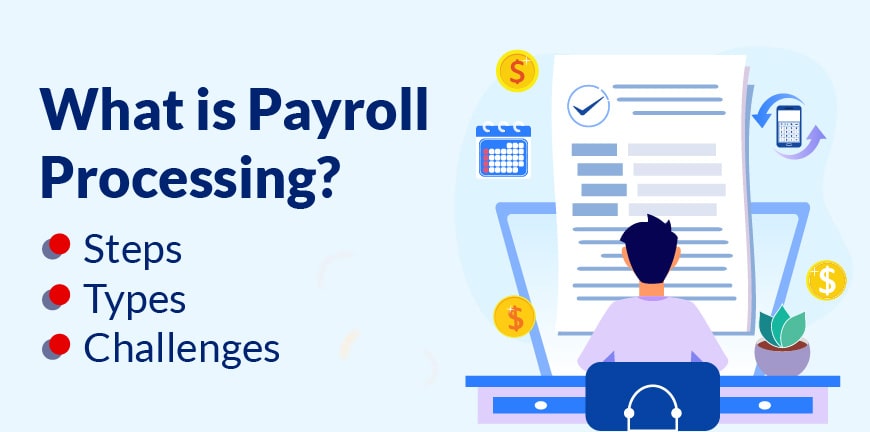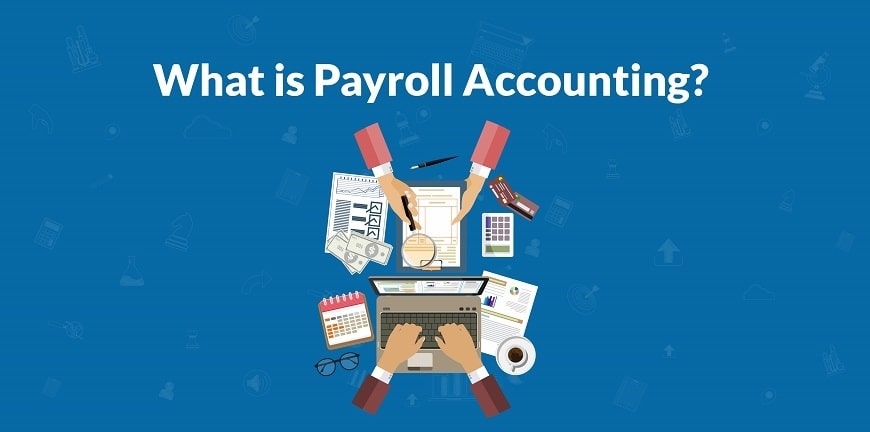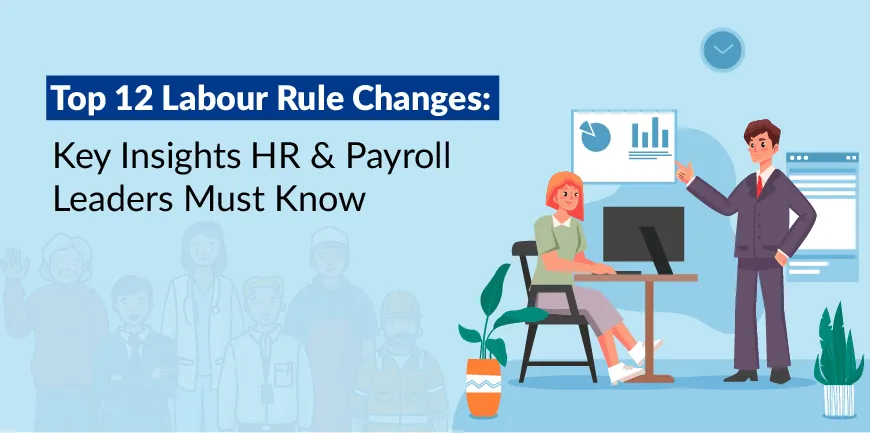
6 Tips to Onboard a Great Leader
18/10/2023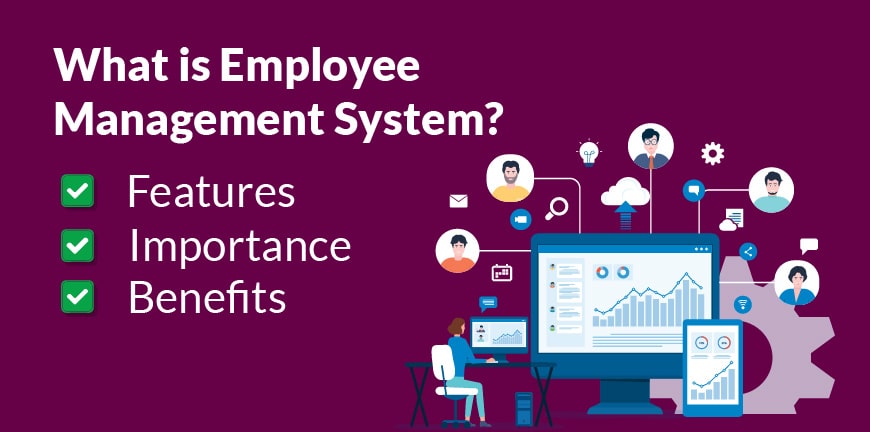
What Is an Employee Management System?
25/10/2023- What is Payroll Processing?
- How to classify employees?
- How to process payroll?
- What is the typical payroll cycle?
- 5 Basic Steps in Processing Payroll
- What are the Types of Payroll Processing?
- How to Process Payroll Manually?
- What are the Challenges in Payroll Processing?
- Payroll Process Improvement Ideas
- Why Outsource Payroll Processing Services?
- FAQs on Payroll Processing
It’s a moment of pure delight to see your mobile screen flashing the SMS notification: Your account has been credited with…xx…x..xx… And we hope that that’s a six-figure amount at least, the next time it is credited, because of all the liabilities we have. A very good payroll processing system in HR is responsible for that uncannily speedy and systematic credit that happens in most ‘great places to work’.
But even if you are a small organization, there is so much you could do, beginning with going for a cloud-based payroll solution and reducing the number of people on your team, to outsourcing payroll entirely to a third party. But before we get into what you could do, let us understand the payroll process in HR first.
What is Payroll Processing?
Payroll processing meaning in HR, refers to arriving at the net pay of an employee after making the necessary deductions. To calculate the payout accurately, it is necessary to maintain an employee list, the benefits you provide to each employee or group of employees, and the tax deductions that must be made at the source, depending on the salary.
How to classify employees?
Employees are generally classified as follows:
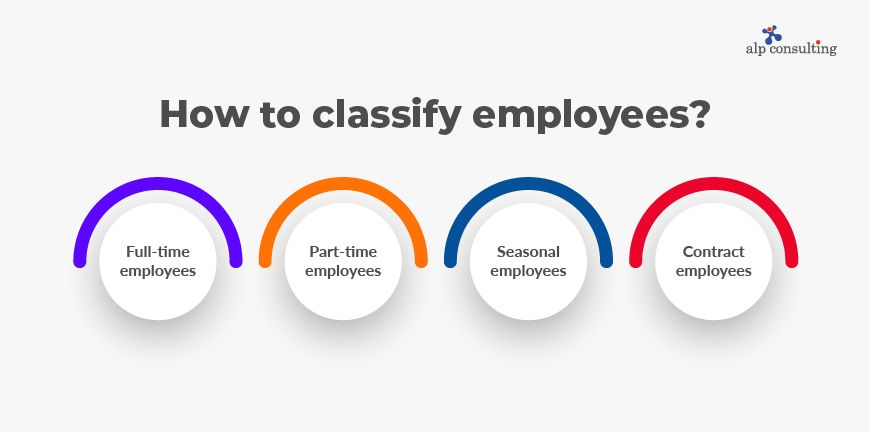
- Full-time employees: They work directly on the company’s payroll and are required to work from the office or home regularly. They will be offered all the compensations and benefits and leaves that regular employees are eligible for.
- Part-time employees: Employees also generally on the company’s payroll but work part-time are called part-time employees. Their payroll cycles may be different from full-time employees.
- Seasonal employees: Employees who work in certain seasons fall under this category. Examples of occupations that happen seasonally are fishing, ski board instructor, chef, etc. The payroll processing for such employees also happens only during the employment season. They also will not be offered the benefits offered to regular employees.
- Contract employees: Employees who work on a contract basis and are generally employed on a third-party payroll are called contract employees. They are not offered the benefits and compensation that exist for full-time employees.
How to process payroll?
Let us now look at how the payroll process in HR works. This is generally how the payroll processing in India works.
Payroll processing can be automated or manual, depending on the speed at which you want it done. Automated payroll is a lot faster than manual payroll, as most of the steps in payroll are done by the software, with very little human intervention.
Beginning with the preparation of employee lists and checking for compliance with classification into groups and tax deduction at the source, and ending with the calculation of the salary and the disbursal of the amount, everything is automated, which also reduces the risk of human error.
What is the typical payroll cycle?
The time between two consecutive paydays is referred to as a payroll cycle. If the pay day comes every week, then the payroll cycle is of a 7-day duration; if it is monthly, then a 30-day duration, and so forth.
A pay period, on the other hand, is the total time for which employees are paid. Some define the payroll cycle as the total sum of activities that must be undertaken in the processing of payroll. This definition is not wrong either. Let us now look at the 5 basic steps in the payroll process in HR.
5 Basic Steps in Processing Payroll

1. Define a policy for payroll
A payroll policy covers the administration of the payroll process in HR, consisting of instructions on how to calculate salaries, what deductions to be made for each employee, and how to schedule payments on payday. It gives employees a clear idea of what to expect on payday.
2. Gather and validate employee info
The employee information is collected while being transparent to employees about what data will be collected, how it will be used, and where it will be stored. Once the employee info is collected, you must validate the info and make sure that it is accurate and that you have all the necessary info for the payroll processing.
3. Statutory compliance for payroll
In this step, all the statutory compliances for payroll that must be adhered to are followed and implemented. The payroll process in India requires several laws to be adhered to. For instance, as per the Minimum Wages Act, the minimum wage of an employee is fixed.
Again, no employees on the payroll must be below the age of employment for the specific role, and according to the Maternity Act, those on maternity leave should be given leave and provided a salary during their leave period.
4. Calculate pay and initiate payout
Now begins the actual process of payroll calculation. In this step, the formula that was set up for the calculation of payroll is used to calculate the salary of each employee after applying the deductions and adding the benefits. The payout also happens after this, and the salary is credited to each account on time.
5. Accounting and reporting
Conducting payroll audits is important to ensure that the payroll process in HR is working in the desired manner. The accounting and reporting process, which happens in this step, analyzes every step of the payroll management process, right from the beginning to the payout stage, and checks for any issues or discrepancies. The payroll audit also happens frequently just to see if the payroll system is well-maintained or if there needs to be any updates needed for compliance.
What are the Types of Payroll Processing?
While there are two types of payroll management processes based on the mode of operation (manual and automated), based on implementation, and where they are processed, they can be of four different types.
In-house payroll
In this type of payroll, the payroll process is managed by an HR or separate payroll team within the company. Everything from compliance in payroll to calculating salaries to depositing them on time is carried out by a single in-house team. This is why it is called in-house payroll.
Benefits of in-house payroll:
- Transparency of processes used in the calculation
- Complete privacy of employee data
- Easy to upgrade over time
Cloud-based Payroll (Software managed)
A cloud-based payroll system is a significant advancement over an in-house payroll system, as it provides an online, cloud-based system.
This completely automates the payroll by moving all payroll data to the cloud and offering a set of tools that allow the payroll team to access the data, check for any issues, and calculate and distribute the salaries.
Benefits of cloud-based payroll:
- Easy integration with existing software
- No equipment or software required
- A range of online tools greatly simplifies things
- Can be updated and managed easily by the provider
Managed by Bookkeepers
Bookkeepers or certified public accountants also manage the payroll systems, particularly for medium-sized to larger companies.
Bookkeepers and CPAs are adept at managing payroll as they are professionals who have been practicing it for a while, but they will not be held responsible for any errors, for instance, an incorrect tax-based or other deduction.
Now, when this occurs across a few accounts on the payroll, it can cause serious damage to the company in terms of compensation, if there is a lawsuit or the government takes notice.
Benefits of Bookkeepers/CPA payroll:
- Experts handle payroll
- Payroll tailored to your needs
- Maybe more affordable
Agency managed
This is the best way to manage payroll, as it allows a company to partner with an agency that handles the payroll processing and other related aspects of HR completely.
The agency also assures that any errors in payroll calculations, stemming from errors in employee lists or groups or compliance with tax regulations, etc., would be taken care of.
It’s the best of all the worlds. It removes the effort of maintaining an in-house team and gives you the convenience of a professional payroll management system with none of the errors.
Benefits of agency-managed payroll service:
- Suit an organisation of any size, small to big
- All core payroll tasks are handled
- Accurate, on-time payments
- 100% compliance
How to Process Payroll Manually?
Processing payroll manually is a labour-intensive task and demands a high degree of concentration and focus. Any error in a particular step will be carried over to the next step and that to the next, leading to the compounding of an error. So, it is not advisable anymore.
To prevent this from happening, make sure that you use automation for repeated tasks to ensure that the payroll calculation is accurate, even if you do intend to manually calculate payroll at some steps.
Also, in manual processing of payroll, the steps are relatively simpler. First, calculate the gross pay, then go on to calculate deductions, and credit the net pay at the scheduled date.
What are the Challenges in Payroll Processing?
Maintaining compliance with laws
The labour laws in any country keep getting amended regularly. There is a need for HR teams, too, to stay aware of these latest updates so that statutory compliance is maintained in every payroll process in India.
This is not just because of the fines that firms would have to incur for non-compliance. It is also because of the benefits by way of government stipends they may get from being compliant, as is the case with the National Apprenticeship Scheme (NAPS) in India.
Errors in the calculation of salary
The formula that was input may be too complicated or may have been incorrectly fed in, which led to an error. One way to overcome this easily is to outsource your payroll to an agency that will take care to ensure that such errors do not arise. Another alternative is to rely on tools that check for certain rules to ensure that the formulae and the calculations are right.
Protecting payroll data
Payroll data is crucial to process payroll in HR, and so it must be accurate and it must be maintained securely and privately. But remember that payroll data includes some sensitive information about your employees, which must be kept secure so that it is not shared with unauthorised sources, who can manipulate it to their advantage. Restricting to necessary staff only and allowing limited access to the payroll data are some of the things you could do.
Integrating multiple systems for payroll
When legacy systems are moved to the cloud or when the payroll system is taken over by an agency, they may need to integrate the payroll system with theirs to migrate the data efficiently and to create formulas and set up calculations on the data. As such, if there are disparate systems in your payroll, then it will lead to data fragmentation, changes that don’t overlap etc.
Payroll Process Improvement Ideas
Make payroll paperless
The payroll process in HR can be fully digital if it is moved to the cloud. In fact, when you are outsourcing to a third-party agency, do ask them if the payroll process they are implementing is paperless. Going paperless can save you a lot of money and could increase the accuracy of the payroll process as well.
Synchronise payout schedules
How do you ensure that the payout happens on a specific date and that the payout is done accurately? For this, the payout schedules must be synchronised, and the payout must happen on the right day and date. It could be monthly or weekly, and the entire process can be automated. No more manual payouts necessary.
Review your payroll process
Make sure that there are no errors in your payroll processing steps. You can ensure this by conducting weekly and monthly checks on the payroll, depending on the payroll cycle. The payroll audits can be shared with the management, and decisions can be made.
Why Outsource Payroll Processing Services?
Managing a payroll system can be an overhead you do not want, especially when outsourcing it, will not only save you time in the short-term but probably even save you a lot of money and a lot of costly errors in the long-term. Contrary to popular belief, payroll processing can also be invaluable if you are a small company. Alp Consulting, an HR consulting services company with over 25 years of experience in managing recruitment, staffing, and payroll needs for several reputed companies, the world over could change the payroll processing and management game for you! When are you talking to us?
FAQs on Payroll Processing
1. What is payroll processing in HR?
Payroll processing in HR involves all the activities beginning with the definition of a payroll policy and ending with the payout to each employee, and regular audits to assess the effectiveness of the payroll process.
2. What is end-to-end payroll processing?
End-to-end payroll processing involves administering all aspects of payroll, including employee performance and term bonuses, assigning paid leaves, etc.
3. When is payroll processed?
Payroll is processed at the end of each payroll cycle, which itself is defined by the company and happens after a specific period.
4. How long does payroll take to process?
Generally, payroll processing in most companies happens in the space of as little as one to two days, though if the company is smaller, it could happen a lot faster.
5. What is the beginning and end of the payroll process?
The payroll process begins with defining the payroll policy and ends with reporting and accounting.
6. Why is the payroll process important?
The payroll process is important as timely crediting of salaries and performance bonuses can improve a company’s reputation and greatly improve employee engagement.
Contact Us For Business Enquiry

Yugandhara V. M
Yugandhara V. M serves as the Assistant Vice President – HRO at Alp Consulting Ltd., bringing over 14 years of rich experience in Human Resource Outsourcing, payroll management, and statutory compliance. He specializes in driving process excellence across HR operations, ensuring seamless service delivery and compliance with labor laws. Yugandhara’s expertise lies in managing large-scale client engagements, optimizing HR processes, and implementing efficient workforce management systems that enhance organizational performance. He also leads comprehensive payroll services, ensuring accuracy, timeliness, and compliance for diverse client portfolios.

